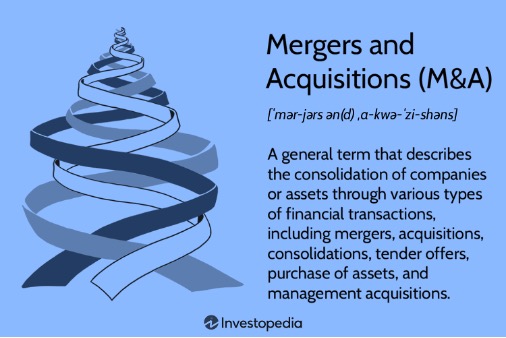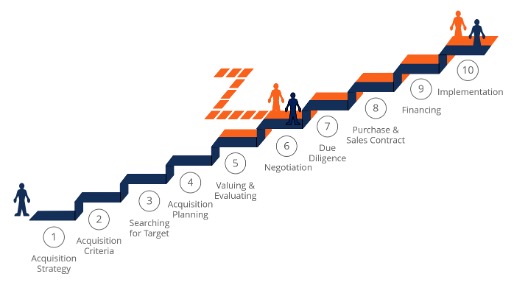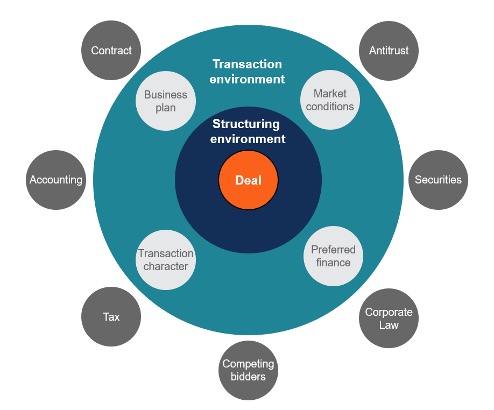If you are a commerce student, chances are you would have come across the term ‘investment banker’ in your search for a career in finance; and would probably have the goal of becoming a hotshot Wall Street banker. After all, why not? It is challenging but a rewarding career in high finance.
So, before we dive deep into the world of investment bankers and their role in M&A deals, here’s a brief explanation of what investment banking is – ‘Investment banking refers to a special segment of banking operation that helps individuals or organisations raise capital and provide financial consultancy services to them.’ They act as intermediaries between security issuers and investors and help new firms to go public. Examples of investment banks include JPMorgan Chase, Goldman Sachs, Morgan Stanley, Citigroup, Bank of America, Credit Suisse, and Deutsche Bank, etc.
Investment bankers are financial advisors to corporations and governments, helping them raise money for expansion and improvement. They are involved in activities such as arranging financing, equity financing, underwriting deals, arranging private placements, and negotiating mergers and acquisitions.
Negotiations in M&A (Mergers and Acquisitions) are crucial because they determine the terms, conditions, and ultimately, the success of the deal. They allow both parties to align on aspects like valuation, governance, assets, liabilities, and future strategies. Effective negotiations ensure that the interests and concerns of both sides are addressed, fostering a more favourable outcome for all involved.

Harvey Spectre, a corporate lawyer from the show ‘Suits’ is the first person who comes to my mind when I hear about negotiating mergers and acquisitions. Remember the time when he tells Mike “I’m not about caring, I’m about winning”? That’s the kind of attitude your client would want you to bring to the table; someone with a winner’s mindset, who does not give in to other people’s demands without gaining what they need through the discussions.
Mergers and Acquisitions (M&A) refer to the process of combining two or more businesses or companies to form a new one. Although merger and acquisition sound synonymous, there’s a fine line of difference between them. An amalgamation of two entities to form a single entity is called a merger; while an acquisition is when one entity takes over another.
This process is usually aimed at achieving common objectives such as growth, expansion, and increasing operational efficiency, among others. M&A allows companies to combine their strengths and minimize weaknesses, which can lead to increased competitiveness in the business environment. In most cases, companies involved in M&A deals are accompanied by financial and legal advisers, who assist in various aspects of the process, such as due diligence, debt financing, and deal structuring.
M&A deals can be classified into different types depending on their nature and the objective. One common M&A type is horizontal mergers, which involve the combination of two companies that operate in the same industry or sector and provide the same kind of products and services. It can help expand market share, reduce competition, or streamline operations.
The acquisition of Instagram by Facebook, now known as Meta Platforms, for $1 billion in cash and stock is considered a notable example of horizontal integration. Both companies operate in the social media industry, and Facebook saw an opportunity to grow its market share and strengthen its photo-sharing platform.
Vertical mergers, on the other hand, involve companies operating along the same supply chain, where a supplier or customer is acquired. This type aims to strengthen control over the production process or distribution channels. For instance, when Walt Disney acquired Pixar for $7.4 billion, the merger combined Disney’s vast resources, distribution capabilities, and well-established brand with Pixar’s exceptional storytelling, animation expertise, and technological innovation. It resulted in a revitalization of Disney’s animation division, marked by the continued success of Pixar’s films under the Disney umbrella, including hits like “Up,” “WALL-E,” “Inside Out,” and many others.

Conglomerate mergers are a type of M&A deal that involves merging businesses that have little to no relation other than the fact that they are currently owned by the same parent company. This type diversifies the acquiring company’s portfolio and reduces risk by entering new markets. Back in 2016, Warren Buffett’s Berkshire Hathaway acquired Precision Castparts Corp. (PCC) for $32 billion. There has never been a deal like this in the company’s history. Berkshire Hathaway is an American multinational conglomerate company while PCC is a leading manufacturer of large, complex structural investment castings, air foil castings, forged components, aerostructures, and critical fasteners for aerospace applications.
A hostile takeover happens when one company (the acquirer) attempts to acquire another company (the target) against the wishes of the target’s management and board. In this scenario, the target company’s leadership opposes the acquisition. Typically, the acquirer directly approaches the shareholders of the target company, attempting to convince them to sell their shares at a price higher than the current market value. Hostile takeovers often involve aggressive tactics, such as making a tender offer directly to shareholders, replacing the target’s board with individuals more favourable to the acquisition, or using other means to gain control without the target company’s agreement.
Hostile takeovers can be contentious and may involve legal battles or intense public relations campaigns. They often occur when the acquirer believes that the target company’s assets, technology, market position, or other attributes are highly valuable and the acquisition would be beneficial, even if the target’s management disagrees. A popular example for this would be of Elon Musk’s takeover of Twitter for $44 billion.
Also, M&A deals can be initiated by either strategic or financial buyers, where strategic buyers are companies that are trying to acquire other businesses to complement or enhance their existing operations, while financial buyers seek to acquire companies purely to turn a profit.
M&A transactions are complex and investment bankers play a crucial role in such transactions as they act as intermediaries and advisors for the companies involved.
Investment bankers structure an M&A deal by performing various tasks such as providing industry overviews, deal origination, company valuation, negotiation, due diligence, deal closing, and post-merger integration. They develop an acquisition/exit strategy, connect to the buyer or seller, conduct a valuation analysis, begin negotiations, assist with due diligence, and lead the closing and settlement of final terms.

Virgin Galactic
The common structure of an M&A deal involves:
Finding a suitable target – The acquiring company identifies its strategic goals for the acquisition, conducts market research, and assesses potential targets. Simultaneously, the target company may explore opportunities or respond to interest from potential buyers.
Valuation and Due Diligence – Valuation involves determining the worth of the target company. Due diligence is an extensive investigation into the target’s financial, operational, legal, and regulatory aspects to assess risks and opportunities.
Negotiations – Negotiations occur between the acquiring and target companies, discussing terms such as price, payment structure, liabilities, employee retention, and post-merger management.
Agreement – Once terms are agreed upon, a formal agreement is drafted, outlining the specifics of the deal, conditions, legal aspects, and any regulatory approvals required.
Regulatory Approval and Closing – The deal may need approval from regulatory bodies to ensure compliance with anti-trust laws and other regulations. After receiving necessary approvals, the deal is closed, and the transaction is finalized.
Post-Merger Integration – After the deal is complete, the merging entities integrate their operations, systems, cultures, and personnel. This phase aims to realize synergies, streamline processes, and maximize the benefits of the merger or acquisition.
It is important to consider several factors when structuring an M&A deal, including the strategic fit and synergy potential between the companies, financial performance and valuation, regulatory and legal considerations, cultural compatibility and integration, and due diligence and risk assessment. Additionally, the deal structure itself is crucial, and it can be structured as a stock purchase, asset sale/purchase, or merger.
Ownership stakes can significantly impact M&A deals. For instance, the more concentrated family wealth is in a single business, the less likely families are to engage in an M&A.
M&A in India
Mergers and acquisitions (M&A) play a pivotal role in shaping the corporate landscape of any country, and India is no exception. There have been several significant M&A deals over the years that have reshaped industries, strengthened market positions, and propelled businesses into new levels of success. For instance, The Tata Group acquired Air India in January 2022, marking the end of the government’s ownership of the airline. This acquisition was a significant milestone for the Tata Group, which had initially founded Air India in 1932. The acquisition involved a 100% stake in Air India and was completed through Tata Sons’ subsidiary, Talace Private Limited. As part of the acquisition, the Tata Group also announced plans to consolidate Air India with Vistara, its joint venture with Singapore Airlines, to create a leading domestic and international carrier with a combined fleet of 218 aircrafts. This consolidation aimed to position Air India as India’s largest international carrier and the second-largest domestic carrier.
Some other M&A deals in India that have left a lasting impact on the business landscape in India are Vodafone-Idea Merger (2018), Walmart-Flipkart Acquisition (2018), Reliance Industries-Future Group Acquisition (2020), among others.
Written by – Shambhavi Gupta
Edited by – Mantasha Memon
